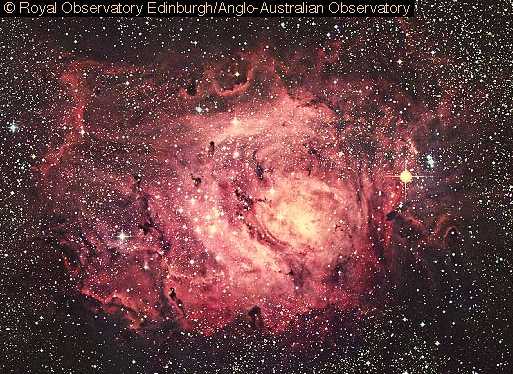Astronomy Picture of the Day
Discover the cosmos! Each day a different image or photograph of our fascinating universe is featured, along with a brief explanation written by a professional astronomer.
Posted on 09/08/2003 11:31:54 AM PDT by petuniasevan
Discover the cosmos! Each day a different image or photograph of our fascinating universe is featured, along with a brief explanation written by a professional astronomer.
Explanation: The large majestic Lagoon Nebula is home for many young stars and hot gas. Spanning 100 light years across while lying only about 5000 light years distant, the Lagoon Nebula is so big and bright that it can be seen without a telescope toward the constellation of Sagittarius. Many bright stars are visible from NGC 6530, an open cluster that formed in the nebula only several million years ago. The greater nebula, also known as M8 and NGC 6523, is named "Lagoon" for the band of dust seen to the left of the open cluster's center. A bright knot of gas and dust in the nebula's center is known as the Hourglass Nebula. The above picture is a digitally sharpened composite of exposures taken in specific colors of light emitted by sulfur (red), hydrogen (green), and oxygen (blue). Star formation continues in the Lagoon Nebula as witnessed by the many globules that exist there.
Needless to say, city lights to your south will wash out the nebula. Even haze/humidity may mean using binoculars to find it.



Short exposure shows more stars:

Long exposure brings out the nebulosity

And this beautiful image is a 90-minute exposure on hypered Kodak PPF 400 film. Both the nebula and the stars are very prominent.

Disclaimer: Opinions posted on Free Republic are those of the individual posters and do not necessarily represent the opinion of Free Republic or its management. All materials posted herein are protected by copyright law and the exemption for fair use of copyrighted works.